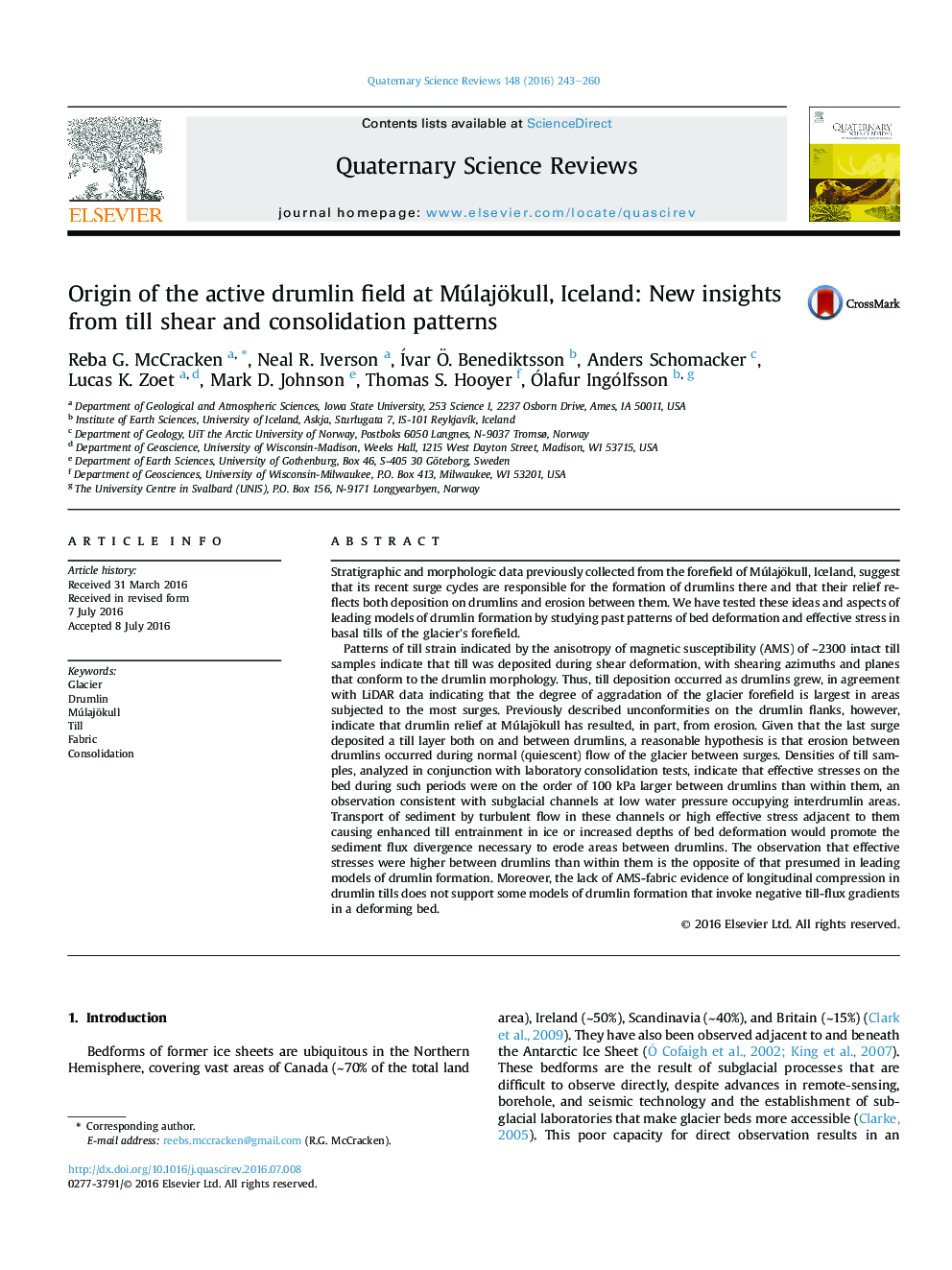| Article ID | Journal | Published Year | Pages | File Type |
|---|---|---|---|---|
| 6445389 | Quaternary Science Reviews | 2016 | 18 Pages |
Abstract
Patterns of till strain indicated by the anisotropy of magnetic susceptibility (AMS) of â¼2300 intact till samples indicate that till was deposited during shear deformation, with shearing azimuths and planes that conform to the drumlin morphology. Thus, till deposition occurred as drumlins grew, in agreement with LiDAR data indicating that the degree of aggradation of the glacier forefield is largest in areas subjected to the most surges. Previously described unconformities on the drumlin flanks, however, indicate that drumlin relief at Múlajökull has resulted, in part, from erosion. Given that the last surge deposited a till layer both on and between drumlins, a reasonable hypothesis is that erosion between drumlins occurred during normal (quiescent) flow of the glacier between surges. Densities of till samples, analyzed in conjunction with laboratory consolidation tests, indicate that effective stresses on the bed during such periods were on the order of 100Â kPa larger between drumlins than within them, an observation consistent with subglacial channels at low water pressure occupying interdrumlin areas. Transport of sediment by turbulent flow in these channels or high effective stress adjacent to them causing enhanced till entrainment in ice or increased depths of bed deformation would promote the sediment flux divergence necessary to erode areas between drumlins. The observation that effective stresses were higher between drumlins than within them is the opposite of that presumed in leading models of drumlin formation. Moreover, the lack of AMS-fabric evidence of longitudinal compression in drumlin tills does not support some models of drumlin formation that invoke negative till-flux gradients in a deforming bed.
Related Topics
Physical Sciences and Engineering
Earth and Planetary Sciences
Geology
Authors
Reba G. McCracken, Neal R. Iverson, Ívar Ã. Benediktsson, Anders Schomacker, Lucas K. Zoet, Mark D. Johnson, Thomas S. Hooyer, Ãlafur Ingólfsson,
